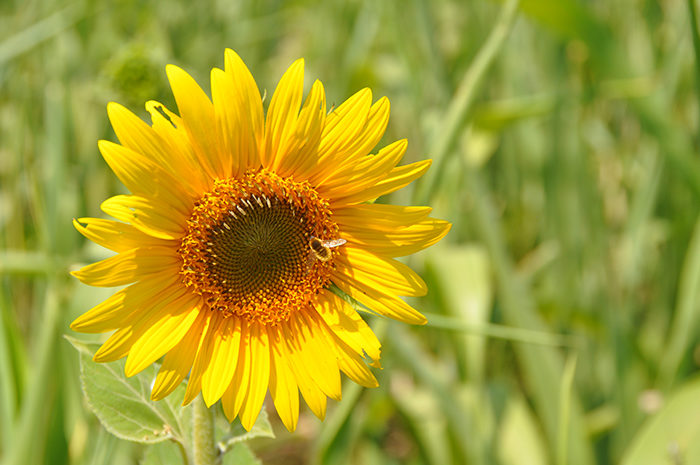An estimated one billion milkweed plants are needed to support a sustainable monarch breeding range and migration.
Wisconsin corn and soybean farmers, Charlie Hammer and Nancy Kavazanjian, are doing their part to provide the needed habitat by providing land for a pollinator strip of native wildflowers and milkweed that was planted on June 5 by students at nearby Beaver Dam High School.
Essential for crop pollination and ecological diversity, insect pollinators are at risk partly due to loss of farmland habitat. Likewise, monarch caterpillars and butterflies face a severe shortage because of the scarcity of their sole food source, native milkweed. National Pollinator Week (June 17-23, 2019) was created to raise awareness.

Beaver Dam High School students (from left) Jack Laude, Nicholas Liermann, and Jayda Grebel, establish pollinator habitat on a Dodge County grain farm owned by Charlie Hammer and Nancy Kavazanjian. Photo by Casey Langan/Sand County Foundation
Beaver Dam High School was among 22 in Wisconsin and Minnesota that received pollinator habitat grants from Sand County Foundation, a national non-profit that champions voluntary conservation practices by farmers and ranchers to improve soil health, water quality and wildlife habitat.
“There are many efforts afoot to provide habitat. Our program’s niche is that it involves agricultural and science students with farmers,” said Craig Ficenec, program director for Sand County Foundation.
“There are efforts to plant milkweed and pollinator-friendly flowers on public lands and urban gardens, but our focus is the huge potential to reintroduce the plants to Midwestern farms,” Ficenec said. “Most agricultural crops rely on pollinators, so their presence provides ecological benefits and economic gain in rural areas.”
Beaver Dam High School was among 22 in Wisconsin and Minnesota that received pollinator habitat grants from Sand County Foundation, a national non-profit that champions voluntary conservation practices by farmers and ranchers to improve soil health, water quality and wildlife habitat.

No-Till Farmer editor Frank Lessiter (center) visited with Nancy Kavazanjian (left) and Charlie Hammer (right) at their farm in the spring of 2019.
The new pollinator patch, located near a solar array that generates the farm’s electricity, wasn’t being used for crop production. Kavazanjian said it made sense to return this small piece of ground back to its native roots. Ficenec agrees, saying under-utilized pockets of land on farms are ideal areas to encourage pollinator and monarch habitat.
Sand County Foundation’s pollinator habitat grant program supplies 600 seedlings of five native wildflower species, growing materials and $1,000 grants to cover costs to high school agricultural and science departments. Teachers receive a training webinar and remote consultation from a native plant nursery. In Minnesota the grants are sponsored by Enel Green Power North America Inc. Wisconsin sponsors include We Energies Foundation, Bayer Crop Science, Syngenta, National Fish and Wildlife Foundation, and Dairyland Power Cooperative.
For more on Sand County Foundation’s monarch and pollinator initiative, visit www.sandcountyfoundation.org/
Listen to our podcast with Charlie and Nancy to hear them talk about their pollinator strips, solar array, and much more.






